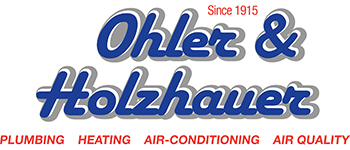
With wintertime approaching, you might be wondering how well your old air source heat pump is going to operate this year. You might also be questioning if now is a good time to do heat pump installation.
A new air source heat pump is more energy efficient and can help you spend less on energy bills over its lifetime.
They’re an all-in-one heating system and cooling system. These heat pumps transfer heat from the outdoor air to make your residence cooler or warmer. They don’t produce heat or air conditioning like a natural gas furnace or a regular central air conditioner. A heat pump has indoor and outdoor units that interact to supply your heating and cooling.
We’re going to discuss this topic today, plus:
- How air source heat pump efficiency ratings like SEER and HSPF affect your heating and cooling bill.
- How ENERGY STAR® models can help you save money.
- How to choose an energy-efficient heat pump system for your home.
What Is SEER in Heat Pump?
SEER (Seasonal Energy Efficiency Ratio) is a heat pump rating system that measures how efficient air source heat pumps are at utilizing electricity for air conditioning. The greater the SEER, the better they are at transferring heat during the cooling season.
What Is a Good SEER Rating for a Heat Pump?
A heat pump with a SEER between 14 and 16 is considered to have good energy efficiency.
What Is HSPF in Heat Pumps?
HSPF (Heating Seasonal Performance Factor) is another heat pump rating system that calculates how well air source heat pumps will work during the heating season. The better the number, the better your heating system will be at using electricity for warm air. This is very important for saving money in colder climates, since your heat pump won’t have to work as hard as it transfers heat.
What Is a Good HSPF Rating for a Heat Pump?
Heat pump systems with an HSPF between 8 and 10 are deemed to be energy efficient and can help keep heating costs low during cold conditions.
What Does ENERGY STAR Mean on a Heat Pump?
ENERGY STAR air source heat pumps meet rigorous requirements established by the U.S. Environmental Protection Agency (EPA) for both heating efficiency and cooling efficiency, so you know these high-efficiency heat pumps will run well.
Air source heat pumps achieve ENERGY STAR if they have:
- HSPF rating of 8.5 or higher
- SEER rating of 15 or higher
- This can reduce your heat pump’s operating costs, plus lower greenhouse gas emissions that contribute to global climate change.
How to Choose an Energy-Efficient Heat Pump
When selecting your heat pump’s efficiency rating, just like any other household equipment, the most important thing is to pick one that has an energy-efficiency rating that you can afford.
If your budget only fits a heat pump with lesser ratings, don’t fret! Even a new one with a lower rating is going to use less energy than one that’s 10 or 15 years old. Here’s why.
- From 1999 to 2005, federal guidelines mandated air source heat pumps to have a 10 SEER rating.
- That number increased to 13 from 2006 to 2014.
- Today, a new heat pump should be at least 14 SEER.
- So, switching from 10 SEER to 14 SEER will make a major difference on your heating and cooling bill.
It’s also essential to know that the majority of heat pumps only last around 15-20 years with proper maintenance. When yours begins to get close to this age, you’ll want to think about getting a new one.
In the past, heat pumps were limited to places that didn’t have cold climates, due to of the way heat pumps work to pull heat from the air. Today’s heat pump systems are also created to withstand colder outdoor air and a cold climate during the winter. This decreases your dependence on a supplemental heat source, electric resistance heating or baseboard heaters during the heating season.
Upgrading your heat pump with Ohler & Holzhauer Inc. may be more affordable than you realize. Between rebates, special offers and financing for qualified customers, buying new HVAC systems may be more affordable than you realize.
It’s not easy to find the time and money to replace aging air source systems. But if you want more comfortable home temperatures with lower energy costs in the future, it might be worthwhile to see our new heat pump units.
At Ohler & Holzhauer Inc. we make updating a convenient process by providing free estimate appointments for air source heat pumps. Just call us at 419-465-8722 to request yours today. We’re proud to offer heat pump installation in Port Clinton your friends and neighbors have trusted since year.
